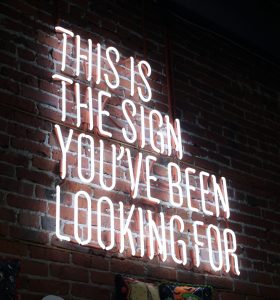Recognition. How do you recognize . . . anything?
 In our last post, we wrote about the concept of intentionality. That post included the following model:
In our last post, we wrote about the concept of intentionality. That post included the following model:
Recognition + Intentionality –> Action + Impact
In plain English, recognition combined with intentionality leads to action and impact.
We’ll deep dive a little more into intentionality next time; in this post we want to look at recognition.
Recognition, simply put, is the ability to see and identify things as they really are.
That’s a little different than seeing and identifying everything that’s wrong with me or my organization. Nor is it only seeing and identifying everything that’s going well. Recognition involves both.
The question becomes, how do I see and identify things as they really are? Or, how can I recognize what’s really happening in myself and my organization?
Seeing and Identifying
“Living is like tearing through a museum. Not until later do you really start absorbing what you saw . . .”
~Audrey Hepburn
It seems silly to write this, but the trick to seeing something is to look for it.
Think about this analogy. You’re having lunch at a cafe with friends and are suddenly aware that something feels off–literally! You discover that your favorite ring has slipped off of your finger, and you start looking for it in a slight panic. Consider the following questions:
- Do you slow down and become systematic in your search, or do you cast about randomly?
- Do you silence your phone to minimize distractions as you look, or do you stop looking every time a new text or call comes through?
- Thinking about your friends, do you ask for help? Or, do you try to look for the ring surreptitiously because you feel too embarrassed and don’t want to cause a scene?
In order to recognize how you’re doing, or how your organization is doing, it helps to slow down and look at things in a systematic way. It helps to free yourself of distractions as you look. Finally, it helps to ask someone else, someone with another perspective, to help you look at yourself or your organization.
What does it mean to look in a systematized way?
If we’re talking about recognizing how things really are in your personal life, you might start with a personality inventory like the Enneagram or Clifton Strengths. You might take an informal life inventory where you grade yourself in several areas of your life, like relationships, health, finances, career, personal interests, etc.
If we’re talking about recognizing how things are going in your business or organization, you might start by asking your team and your employees, either through direct interview or by using surveys, how things are going. Similar to a life inventory, you might grade the health of your organization in areas such as leadership, finances, employee engagement, compensation, strategic vision, communication, operational efficiency, productivity, etc.
The key is to slow down and to have some sort of tool that you can use to assess your current situation, or your organization’s.
Minimizing distractions.
Minimizing distractions is largely self-explanatory. However, it bears mentioning because we live at a time, and with tools like our laptops, phones, and smartwatches, when fighting distraction is a constant battle.
If you are going to take the time to try to recognize how things are going, it’s really beneficial to turn your phone off, to clear your schedule, and to lock your office door if needed! Create the time and space and quiet that you’ll need to really be able to see and identify what’s going well and what isn’t.
Asking for help.
Lastly, when it comes to recognition, in our own lives and in our organizations, we sometimes need to ask for help. It can be difficult to admit that we need help, especially in certain family systems or business circles where asking for help can be mistaken as weakness or uncertainty.
The truth is, even when we look in a slow and systematic way, even if we minimize the distractions of life, we each come with a certain set of beliefs and experiences that can color how well we see what is really going on in our lives and our organizations.
Said more simply, even when we try to take a hard look at ourselves and our businesses, we can still come away seeing what we want to see.
Asking for help opens up an opportunity to learn from someone else’s perspective. It allows us to see and identify how things are from someone else’s point of view. Help can come in the form of a trusted friend or colleague, an accountability group or mastermind, or from a professional counselor, coach, or business consultant.
Remember, recognition combined with intentionality leads to action and impact.
What do you recognize about yourself and your organization?
What is going well?
What could use improvement?
Contact us if you’d like another set of eyes to help you look! We can help you administer and interpret the personality assessments and inventories we mentioned above.
Syte consultants also have experience in strategic planning, executive coaching, leadership team development, human resources consulting, business process analysis, as well as enterprise software systems consultation.
Lastly, if you would prefer to have this kind of content sent to your inbox, please sign up for our newsletter!
Photo by Austin Chan on Unsplash
ERP Readiness Self-Assessment
Is your organization ready for a new or upgraded ERP solution? Find out with this complimentary self-assessment.
Doing Business Better
You strive for excellence, believe in your people, and want to do things right the first time. And you know that you need help to get to the heart of your business challenges and make the best choices for the future of your privately held manufacturing and distribution company. That’s where we come in.
We help you focus and find exactly the right path to accelerated growth and sustainable success — from your people to your processes to your ERP software.


